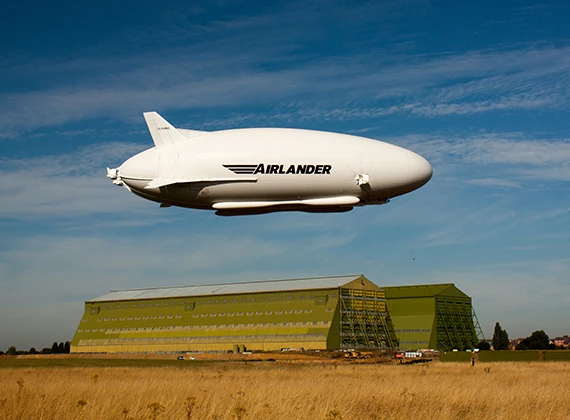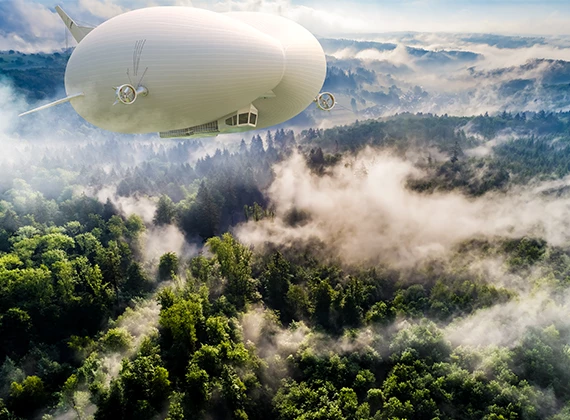Meet Airlander
Airlander uses a combination of proven aerospace technologies from a mixture of traditional cylindrical airships such as its non-rigid inflatable hull made from composite flexible structural material and using helium as the lifting gas. Airlander also uses current technology from aeroplanes, helicopters, or novel VTOL aircraft such as V-22 Osprey. This allows for the aircraft to have vectored thrust for lift and control, composite rigid structural materials, electronically controlled engines, and sophisticated avionics. This combination makes Airlander a cutting edge aircraft with game changing capabilities.



